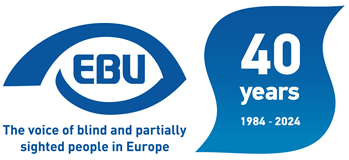A. LEGISLATION
1. What legislative measures are being taken in your country to facilitate the mobility of people with disabilities in general? (Accessibility of roads, transport, buildings) when should they apply?
The law on prevention of discrimination against persons with disabilities, general antidiscrimination law and other legal rules.
2. Are there specific measures for the visually impaired? If so, describe them briefly.
No.
3. How are these measures implemented? Are visually impaired Associations associated with their application? If so, how?
n/a
4. Have they already produced tangible results?
n/a
5. What are the penalties for non-application of the above measures?
n/a
B. TRAVEL AID
6. What are the main technical aids used by visually impaired people in your country for mobility: long cane, optical aids, electronic aids, GPS?
Mainly long cane and recently GPS.
6.1. How are they distributed?
6.2. Is training provided during their acquisition?
No.
6.3. How are they funded in the acquisition?
Long cane can be obtained free of charge through health insurance. GPS is still not in health insurance system.
6.4. How are guaranteed and financed repairs, maintenance?
No existing guaranteed and financed repairs, maintenance costs.
6.5. Is the white cane recognized as a symbol of visual impairment? If yes, specify the conditions related to its attribution, sanctions in cases of abuse, specific provisions regarding its use.
Yes, but no sanctions exist in cases of abuse or specific provisions regarding its use.
7. Is research conducted in your country to develop new assistive devices? If yes, please specify. How are visually impaired people associated with this research?
No
C. LOCOMOTION TRAINING
8. How are visually impaired people in your country trained in mobility? (Specify training in the regular school or specialized in functional rehabilitation for people who lose their sight as adults, in the context of structures for the elderly.)
Mainly training in the regular school for blind and partially sighted pupils.
9. What is the training undertaken by mobility instructors? Is it recognized by an official certificate? If yes, specify briefly the content of the training. Is there any on-the-job training for mobility instructors?
No. Our mobility instructors have training only in the faculty for special education and rehabilitation.
D. AUTONOMY IN DAILY LIFE
10. Help with daily life: how are the visually impaired in your country trained to be autonomous in daily life?
No training exists.
11. Is there specific support? If so by which professionals is it provided and in what context? What is the training of these professionals?
n/a
12. Does your country have training for instructors in autonomy? Is there a certificate recognized by the State?
No.
E. PUBLIC INFORMATION AND PROFESSIONALS
13. Is the public informed of the mobility needs of visually impaired people? If yes, by whom and how.
Yes. From the Union of the blind of Serbia and its local organizations of the blind and through public information media.
14. Do professionals who interact with visually impaired people have any specific training or awareness training concerning visual impairment?
Some of them yes, but some of them no.

